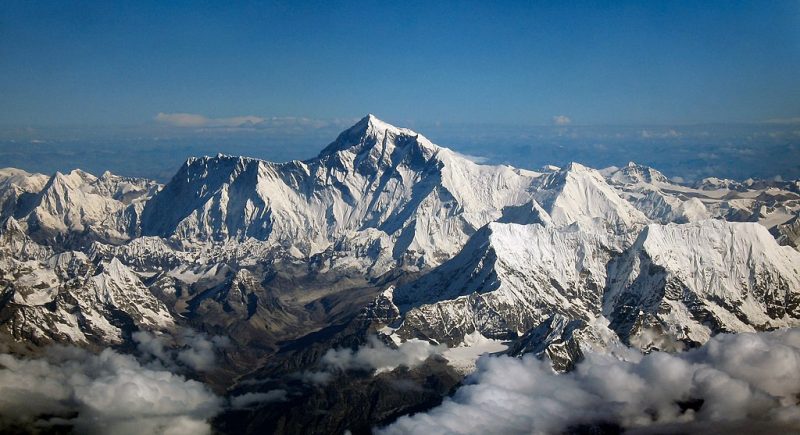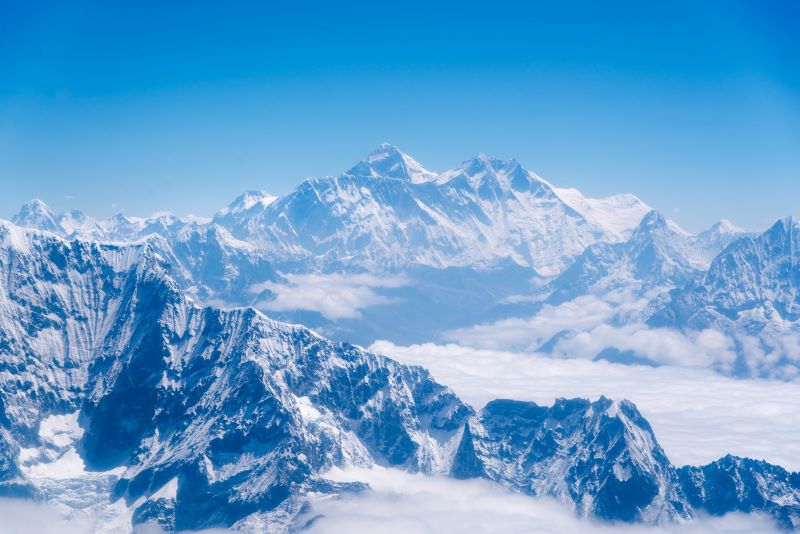
When climbers ascending Mount Everest reach their last major camp – at the South Col – they’ve crossed into what’s called the death zone. At this point – some 26,300 feet (8,000 meters) above sea level – humans can’t survive for long. There’s inhospitable weather and sub-zero temperatures. Yet, researchers at the University of Colorado-Boulder said on March 14, 2023, that the germs climbers leave behind at the South Col might survive a very long time … centuries. How’d the germs get there? Steve Schmidt of CU Boulder – a co-author on the study – commented:
If somebody even blew their nose or coughed, that’s the kind of thing that might show up.
It’s gross. But there’s an upside. The researchers said the frozen microbes shouldn’t significantly impact the broader environment. And these human germs can reveal just how hardy microbes can be in extreme environments. The scientists said the left-behind germs on Everest might someday help us understand biomes (life zones) on alien worlds. The germs on Everest might also teach us how we humans could impact, for example, Mars.
The peer-reviewed journal Arctic, Antarctic, and Alpine Research published this new study on February 16, 2023. Nicholas Dragone of UC Boulder led the research team.
Last chance to get a moon phase calendar! Only a few left. On sale now.
Human microbes on Mount Everest
Twice a year, around May and October, hundreds of mountain climbers camp at the South Col before their push to the top. There are so many that the issue of trash has become a concern. But now, it seems, they’re leaving behind more than trash.
So how does human DNA get left behind on a place like Everest?
Of course, we humans shed microbes wherever we go. But the researchers said it was “surprising” that microbes that’ve evolved to thrive in the warm and wet environments of our bodies can also survive – in a dormant state – in the harsh conditions of the death zone on Everest. Schmidt said:
There is a human signature frozen in the microbiome of Everest, even at that elevation.
Taking samples from the South Col
In light of the extreme environment and life-threatening weather on Everest, a team of researchers set up Earth’s highest weather station on the South Col in 2019. So Schmidt asked those researchers if, while they were there, they wouldn’t mind taking some soil samples. The mountain pass is a wind-swept region and one of few spots on Mount Everest not covered in snow and ice.
Co-author Baker Perry of Appalachian State University was one of the researchers who climbed to the South Col. He collected soil samples on the South Col as far from the camp as possible.

What they found in the soil
The most common microbial DNA sequence they found belonged to a fungus (Naganishia) that is accustomed to harsh conditions, such as extreme levels of cold and UV radiation. But they also found DNA associated with humans. That included Staphylococcus, common skin and nose bacteria, and Streptococcus, common in the human mouth. On Mount Everest, most of the human microbes go dormant or die. But organisms like the fungi can momentarily prosper at high altitudes, with a bit of moisture and sunshine.
The discovery of fungi and human microbes that can exist in such extreme environments for years is an important insight for our future in space. Schmidt said:
We might find life on other planets and cold moons. We’ll have to be careful to make sure we’re not contaminating them with our own.

Bottom line: Researchers have found microbes, including those associated with humans, within the death zone of Mount Everest. These findings have implications for our future in space.
Read more: Satellite data helps climbers ascend Mt. Everest
The post Mount Everest climbers leave their germs behind first appeared on EarthSky.
0 Commentaires